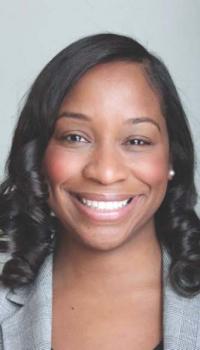February 20, 2020

When I was growing up in the South End and Roxbury in the 1990s, my family (and most of the families around us) lived in affordable housing run by the Tenants’ Development Corporation — first behind Rosie’s Place, then across from the Piano Craft Building on Tremont Street. Our neighborhood was almost exclusively black, and almost exclusively low-income.
The South End back then was segregated by block; as you walked toward downtown, black faces were replaced by Latino faces, and then Asian faces. These groups largely didn’t engage with one another.
Change came to the South End slowly at first, then accelerated over time. As wealthier residents began to buy the brownstones around us, my twin brother and I suddenly had more customers for our fledgling dog-walking and snow-shoveling businesses. At home, we heard our dad talk about how much he wished he could buy our house. Eventually, I realized what he meant: not only would it mean owning our home, but it would also prevent us from being displaced by rising rents, as so many of our neighbors were.
As I got older and entered high school, I came to understand a different side of my neighborhood’s changing demographics. I often went to a local cafe after school to do my homework. I would sit for hours on end observing the melting pot that my neighborhood had become. Lebanese families sat next to young gay couples, drinking coffee. A group of Latino young men from Villa Victoria waited in line in front of a couple of white empty-nesters. All were sharing the same (small) space, coexisting as only cities can make people do.
When I went away to college, I remember thinking that the change in my neighborhood had prepared me well for the mix of cultures I found on campus — certainly better prepared than if I had stayed in the homogenous South End of my younger years. But when I returned to Boston years later, I also saw what can happen when gentrification goes too far, and a neighborhood becomes inaccessible to its lifelong residents. We see this change happening on a citywide level today.
Boston has added 275,000 new jobs in the last 12 years — that’s more than two-and-a-half times the number of new homes that have been built. Earlier this month, a report by The Boston Foundation revealed that even as Boston’s population has surged by more than 100,000 over the past two decades, the city now has 10,000 fewer school-aged children than it did in the year 2000.
As condos sell for $35 million in Downtown Crossing, the median household income in Roxbury and Mattapan is about $33,000 per year. It has become a struggle for long-time residents, families, and those not earning six figures to make a life here. The reasons for this are myriad: skyrocketing rents and home prices, schools that aren’t meeting their needs, traffic-clogged streets, and an unreliable, inequitable public transit system.
Elected officials can’t wave a wand and stop market forces from changing neighborhoods over time. But we don’t have to stand idly by, either. If we’re willing to ask hard questions and articulate a clear vision, we can shape the future of our city for generations to come.
The key questions that Boston’s leaders need to answer now are these: What do we want our city to be? And for whom?
I believe Boston should be a place where anyone — new immigrants and lifelong residents, professionals in high-paying jobs and people living paycheck to paycheck — feel welcome. Living up to this vision will require bold policy solutions on a host of issues. This won’t be easy, but it’s essential to our future.
I’ve been committed to advancing this type of change on the City Council, whether by releasing a plan to bring equity to our public schools, working to improve access to public transportation along the Blue Hill Avenue corridor, or expanding affordable housing through the Community Preservation Act.
But there is much more work to be done. For me, that starts with making sure our schools are preparing all of our children for success, which will help us keep families in the city for the long term. Bostonians should demand bold action and accountability from the leaders of our school system, and accept nothing less.
Second, we need to do more to share the fruits of Boston’s prosperity with everyone. Implementing a modest transfer tax on home sales of more than $2 million will help to fund affordable housing construction across the city. As skyscrapers rise downtown, we need to make sure that affordable housing makes up a significant portion of new development, not just the bare minimum.
Most pieces I read about Boston’s future tend to argue that the city’s economic boom is either the best thing to happen to us, or that it’s destroying the city as we know it. Gentrification is either bringing new opportunities to Boston’s neighborhoods, or it’s hollowing them out.
My own experience leads me to believe the truth lies somewhere in between.
Boston’s economic boom is a good thing. And our success means we have to work doubly hard to preserve the diverse and unique character of our neighborhoods.
The beauty of cities is that as we grow and change, we can discover new opportunities, culture, and identity in places we never envisioned. As long as we hold true to equity as our north star, I trust that we can build a city of which all of us can be proud.
Andrea Campbell represents Boston’s fourth district on the City Council and is the first African-American woman to serve as the president of the Boston City Council. She lives with her husband and two sons in Mattapan. This article was first published by WBUR 90.9FM on its Cognoscenti page. The Reporter and WBUR share content and resources through a media partnership.


